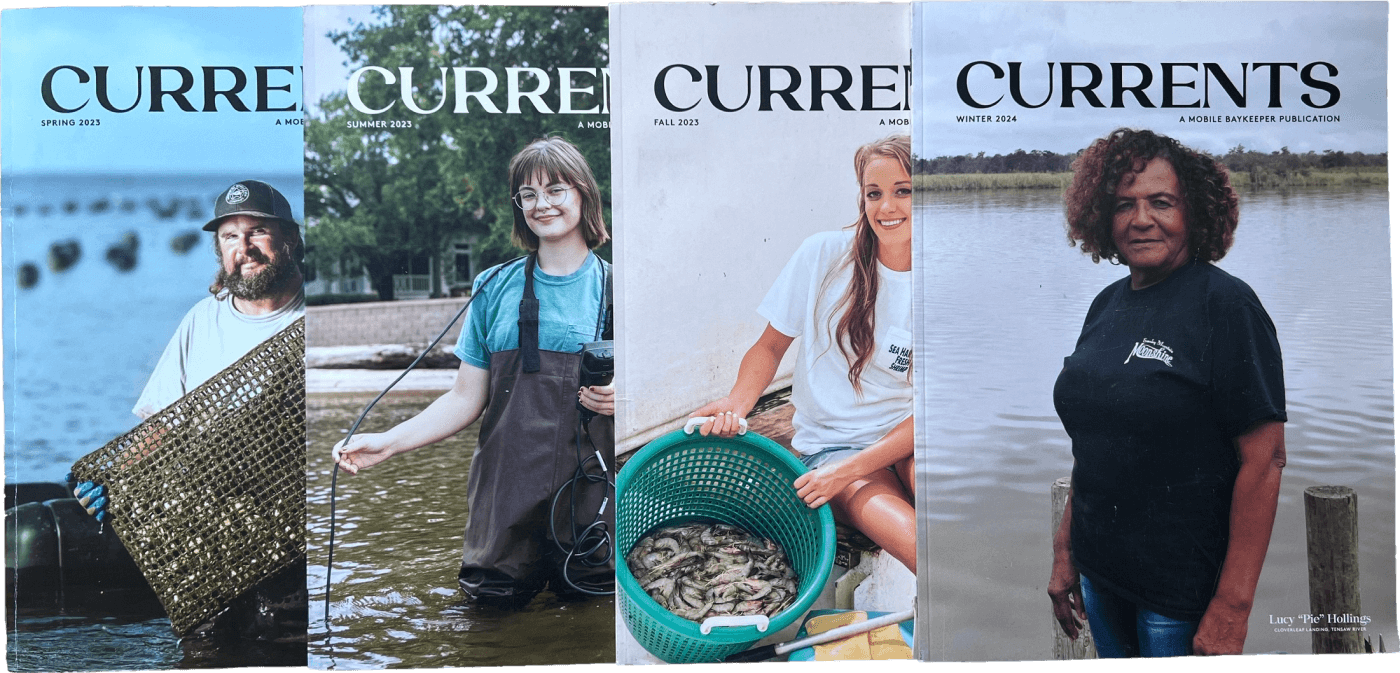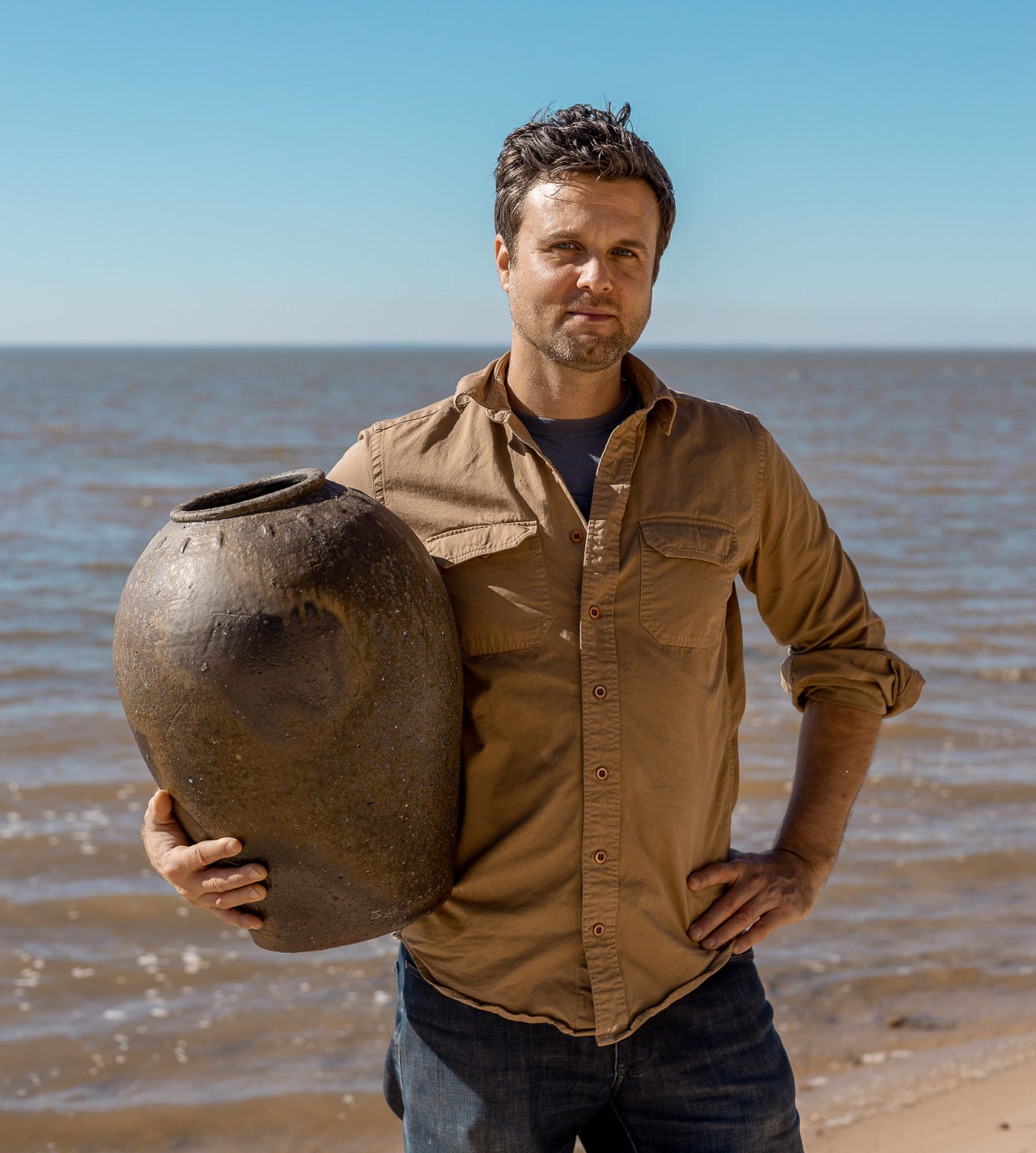
This article is from the spring 2024 edition of Mobile Baykeeper’s print quarterly, CURRENTS. The magazine is mailed to active members who have given more than $50 in the past year. To get on the magazine’s mailing list, donate here.
by Sam Wilkes | Photos by Courtney Mason Hilley
The first known pottery in the Mobile Bay area was made more than 3,000 years ago. The indigenous people originally mixed clay with plant fibers before advancing to a sand mix for a more durable pot. Around 800 years ago, more ornate pottery was created by the Mississippians at the Bottle Creek site in the Mobile-Tensaw Delta. They formed pottery from local clay tempered down with crushed mussel shell. Primarily farmers who grew corn, they needed vessels suitable for cooking at boiling temperatures for a long period of time. They understood that the mussel shells improve the workability of the clay as well as the thermal properties.
In addition to being functional, the Bottle Creek serving pieces contained intricate designs and decorative elements, scored by shells, sticks, and fingernails. The “hand-and-eye” motif was a common art design of the Mississippians from Moundville, representing the constellation known today as Orion. They believed that when Orion touched the western horizon, an opening developed — represented by the circle on the palm — allowing those who had recently passed to enter the Milky Way, or “Path of Souls,” to reach their final resting place. When the Moundville Mississippians established settlements at the Bottle Creek site and blended cultures with the Pensacola culture, a new version of the “hand-and-eye” design emerged on the pottery, with a horizontal — rather than vertical — orientation of the hand. This was a novelty unique to the Mobile Bay area. A pottery fragment depicting this design is currently on exhibit with the History Museum of Mobile.
“We rely on pottery to discern the limits of an ethnic groups’ range, as it’s the common artifact found,” says Dr. Greg Waselkov, professor emeritus and former Director of Archaeological Studies at the University of South Alabama. For instance, “the pottery found at Bottle Creek site is identical to those at the Dauphin Island shell mound. So, it’s very likely they were part of the same society,” says Waselkov. Relying on pottery remnants, archaeologists believe the Bottle Creek society had a cultural reach that ranged from the eastern Louisiana coastal border to slightly east of Pensacola.
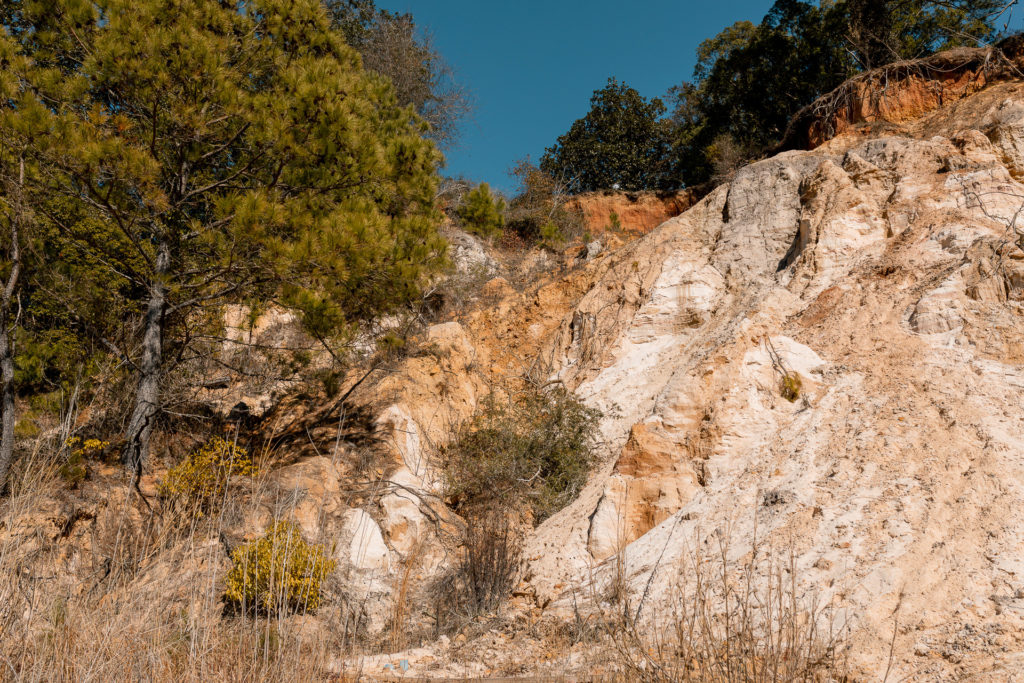
When the Europeans settled in the area, they found the Mobile Bay region to be ideal for their jug making and pottery traditions. “We attracted potters directly from Europe that came over with their kiln designs and technology from the motherland,” says Zach Sierke, a wild clay potter in Fairhope. “The attraction to our area was due to a combination of factors. One is the high-quality clay in our area that is easy to access and needs very little processing. Moist in the ground, pull it and go. Also, proximity to a great market with the port of Mobile, [which was] significant for big trade at the time. And, of course, water transport. If you look at all the historic kiln sites for our area, they were built right on the waterway. Clay could be mined and pots made and then put directly on boats to go to market.”
One significant kiln site was located on Mobile Bay just south of Stedman’s Landing along Ecor Rouge throughout the early 1800s until the 1900s. They would mine the clay veins protruding from the red bluffs, fire in the onsite kilns, then place the jugs, bricks, and pottery on nearby boats to Mobile which were exported all over the world. Even today, “on the right tide, whole sections of that Mobile Bay beach are covered with pot shards and kiln bricks,” Sierke says. The abundance of artifacts has decreased over the years with people picking over the remnants. “But still, for any person wanting a grasp of the pottery-making environment and clay deposits and the geology of our place — that walk from Stedman’s landing to the old Ecor Rouge kiln site is unparalleled,” Sierke says.
Sierke’s great-grandfather, Homer Howard, inspired his fascination with local clay. A Union soldier from Indiana, Homer grew fond of the Marlow area while stationed there before the last major battle of the Civil War at Fort Blakeley. After the war, Homer settled along Cowpen Creek, near what is known today as Clay City, and started making pottery from the local clay veins found in nearby exposures and bluffs. When finished, Homer would sail Cowpen Creek to Fish River down to Mobile Bay, eventually arriving at the markets in Mobile.
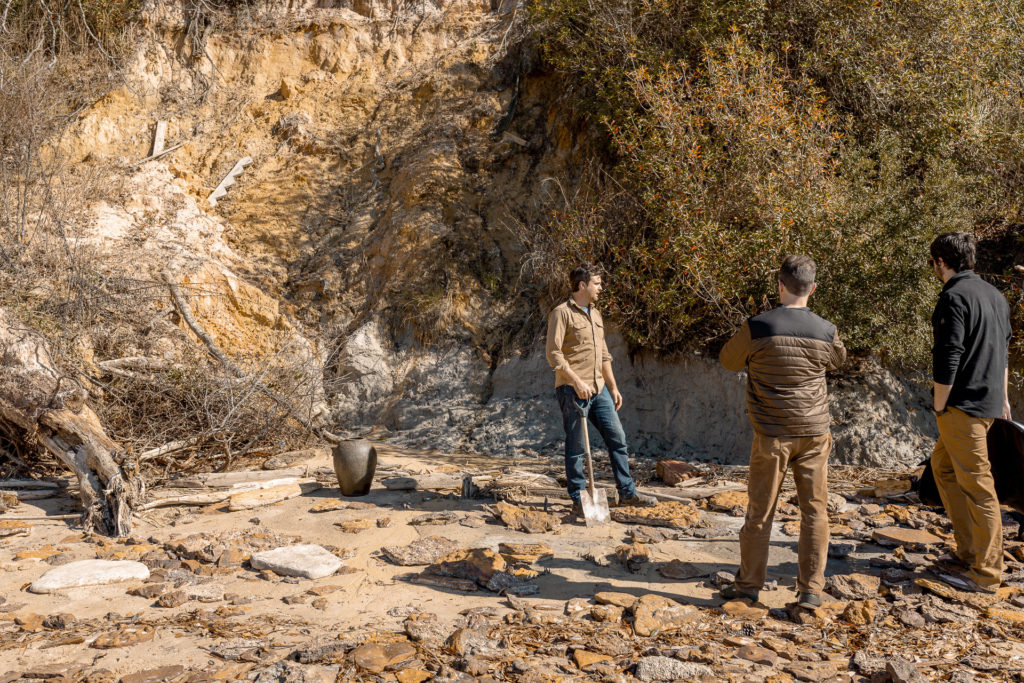
While on break from his second semester at Eckerd College, Sierke found his great-grandfather’s kiln on Cowpen Creek and dug clay from the same historic veins that helped build the old community. “A lot of the clay that we have is essentially fossilized silt,” he says. The clay source of Mobile Bay and Fish River date back to the Miocene era from 5 to 23 million years ago. The massive clay tables at Fish River, coupled with its water transport access to Mobile Bay, helped create an industry for the mass-manufacturing of bricks and clay tiles, giving that area the name of Clay City. Much of Fairhope and Baldwin County were built with those orange structural clay tiles.
It’s evident the waterways and geology of the Mobile Bay area helped cultivate a rich history with clay. And this natural dance only intensified Sierke’s obsession. “I love art, fine craft, and have my all my aesthetic convictions, but to be able to understand these natural processes and have a hand in it, that’s what it’s all about for me,” he says. “For me, it’s great to have this narrative that dips back into these big systems of nature that are older and more powerful than any human effort, but also to understand that human’s efforts with clay were the first high technology. [I love] to feel these connections to family history, to ancestors, to all the land, but also to have hands-on practice and an understanding of geology … to be able to go in and unearth a piece of clay that has not seen the light of day in 10 million years and take it to the workshop and make something for daily life.”
Throughout his career, Zach has mined historic deposits at the old kiln sites located near the local waterways. “But I’m always looking for new stuff,” he says. “I enjoy digging almost more than making the pots.” He then takes the clay in chunk forms and grinds them down into powder. “Each clay will have differing working qualities, firing qualities, and colors. So, I’ll blend the powders to make a clay body that has the qualities that I’m ultimately looking for.”
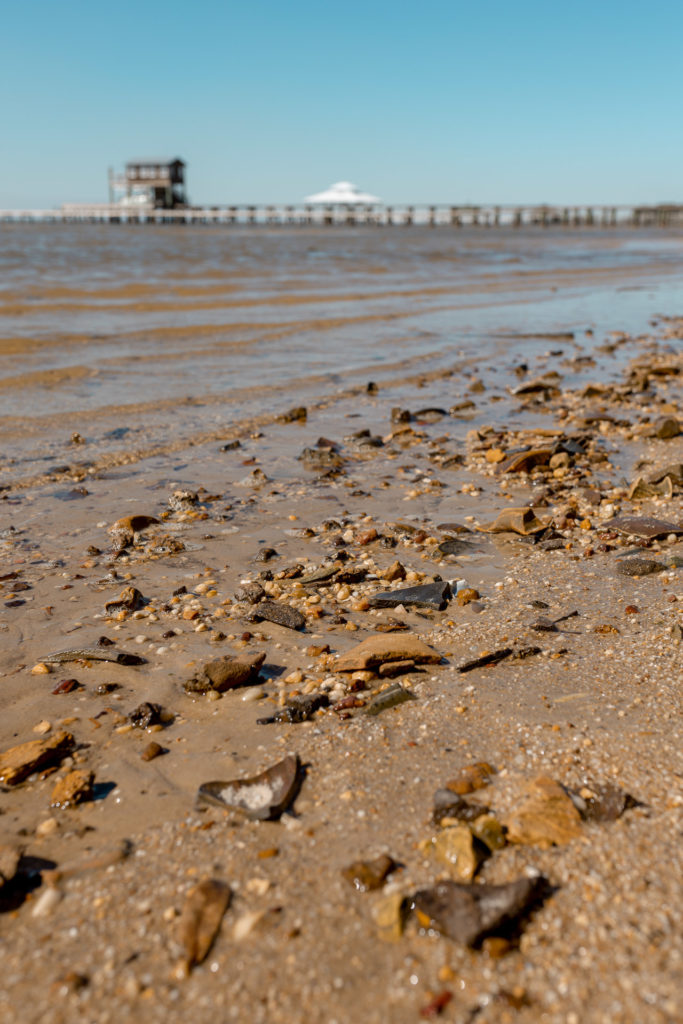
Inspired by a group of Japanese Zen monks who rebelled against the pretentious Chinese aesthetics of the time, Sierke built an Anagama kiln (Japanese for “cave kiln”) beneath the sprawling live oaks on his property north of Point Clear. These particular Zen monks started a movement around peasant pottery created in primitive cave kilns, with local clay from the land, exposed directly to the molten ash and the power of the firing. “But to be clear, I don’t make pottery for Japanese culture. I just found it incredibly inspiring that each village with this pottery tradition and family lineage worked with materials in that place, and they developed their aesthetic around it and their culture celebrated all those qualities coming together in the pottery. I wanted to do the same thing here in the environment I grew up in because it resonates with me. Make the work have that genius-of-place kind of quality to it.”
Sierke’s methods are radically different than the average potter who uses electric or gas kilns, which reach high temperatures but have no flame or ability to change the atmosphere. “Over the course of wood firing we’re reaching and holding volcanic temperatures — 2,300 to 2,400 degrees and holding those temperatures for several days. The ashes from the wood itself become molten and blow through the kiln like a molten wind, coating everything in their path. As they interact with the clay surface, which has also become molten at that point, they develop a natural ash glaze. So, when one is looking at my pottery and seeing the shiny tones versus warm matte tones, you’re actually seeing the path of the flame around the pot. The windward side facing the firebox is going to be shiny with molten ash. The back side is going to be licked by the tips of the flame to coax certain kind of flashing patterns out of the clay itself.”
Sierke performs one to two firings a year, and each one requires a lot of helping hands, turning the occasion into a communal event. “The whole process is close to three weeks, and it cools for a week,” he says. “And each firing I’ll have a handful of professional wood fire potters and then over a dozen other people, ranging from students to young up-and-coming potters to people from the community who have no other ties to ceramics other than they just love being part of the process.” Sierke teaches an annual wild clay workshop at the Eastern Shore Art Center and leads wild clay expeditions for those wanting to see the source firsthand.
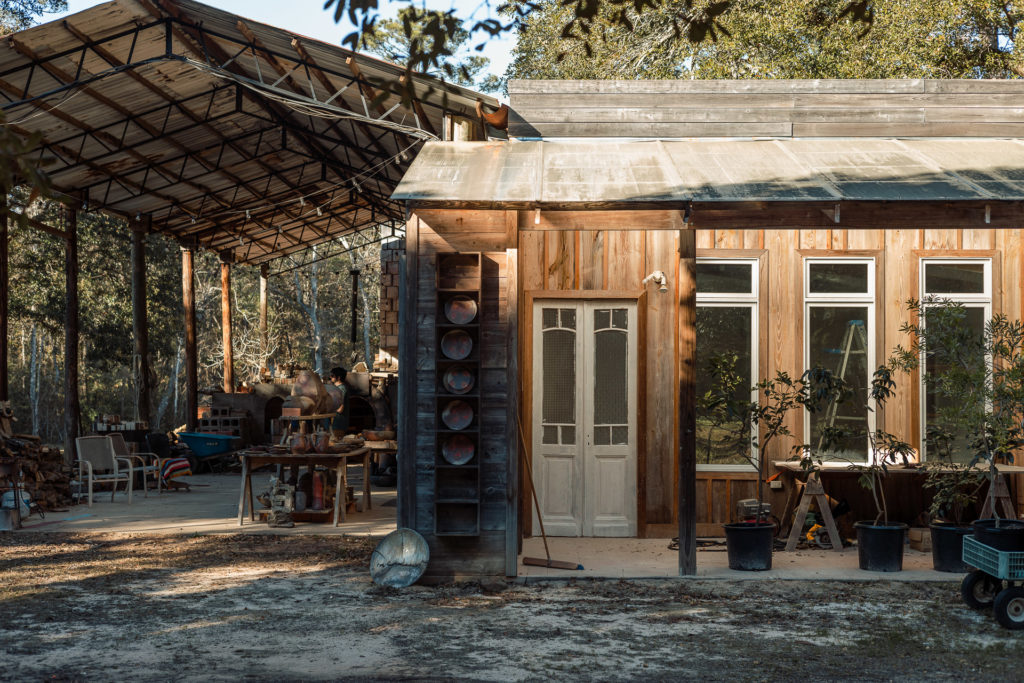
Yet, Sierke’s art is but one style of several contemporary potters carrying on the clay tradition of the Mobile Bay area. In the 1930s, nationally renowned Edith Harwell established her studio on the site of what is now the Eastern Shore Art Center and helped bridge the gap between the dying out of the industrial potters to the more academic inquiries around the craft traditions. “Without bridging that gap, we today would not have exposure to any of this tradition,” Sierke says. Tom Jones studied under master potter Harwell at the Fairhope Organic School. In the mid-1970s, Tom opened a shop in Clay City where people to this day drive from all over to see his one-of-a-kind wares and seasonal items.
Susie Bowman started taking classes at the Eastern Shore Art Center while raising three children. That class, along with her degree in sculpture, developed into a home studio and eventually The Kiln Studio and Gallery in downtown Fairhope. The Kiln displays contemporary ceramics from local artists as well as those nationally known. Susie has shipped pieces all over the world. “There is a whole movement back to using wild clay from wherever you live,” she says. “But we’ve had the advantage because it’s been known here for over a century or so. Much more of a natural thing to come from here than some of the other places around the United States, where people have to seek it out, while we just have it.
For three consecutive years, The Kiln was one of five galleries in the country that was accepted to exhibit at the National Ceramic Conference, which drove interest from all over the world to Fairhope. In 2019, Bowman “passed the apron” to the next generation by selling The Kiln to her colleague, Megan Shifflett. “This is really a niche practice,” Bowman says. “So, it’s hard to find somebody that would want to take it on. But Megan’s a great teacher. So, it’s worked out quite well.”
Bowman continues creating her own work with a soda kiln in her backyard, drawing inspiration from her local environment. “I focus on live oak trees, satsumas, cumquats, and those local elements,” she says. “I have a huge live oak in my backyard that canopies my house. I live with it, walk by it, and see it every day. But I didn’t realize until I started doing this work what an impact it had made on my life. I’ve learned a lot from that 400-year-old tree.”
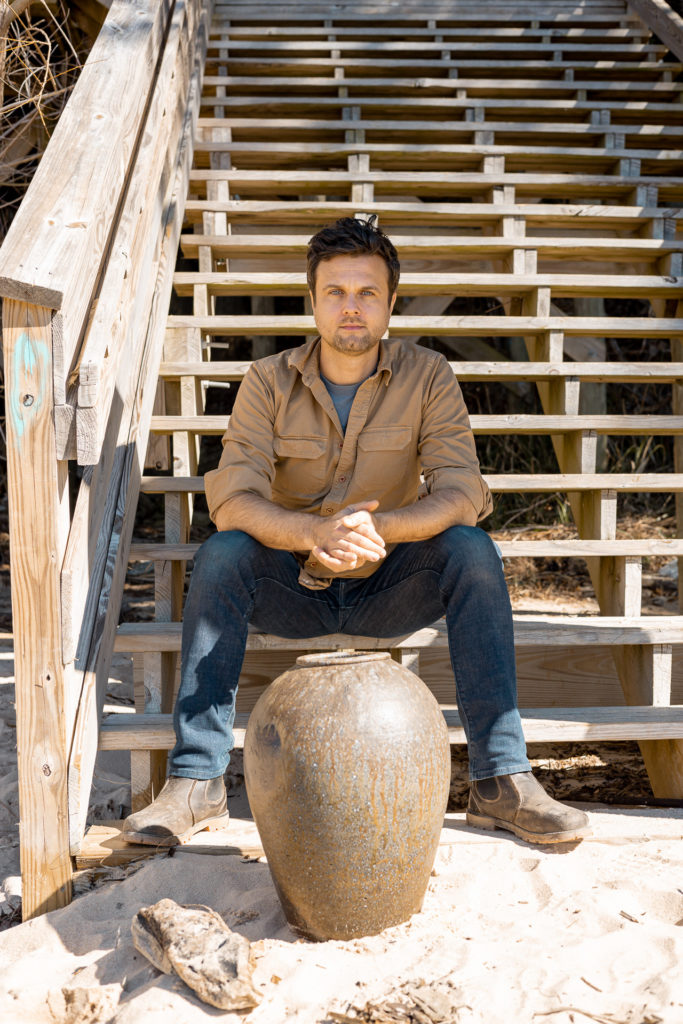
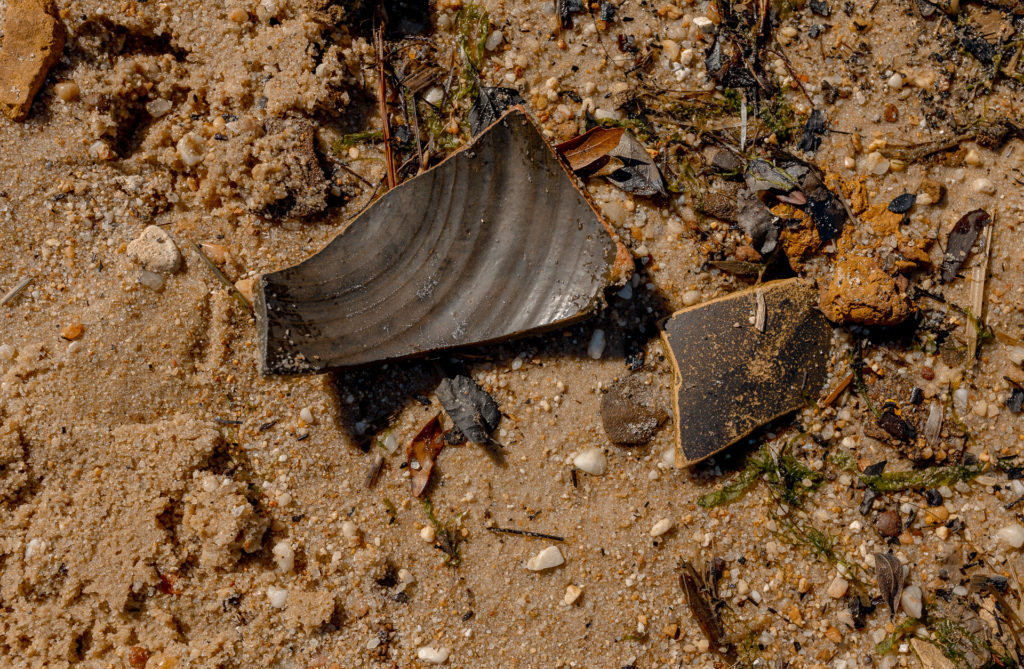
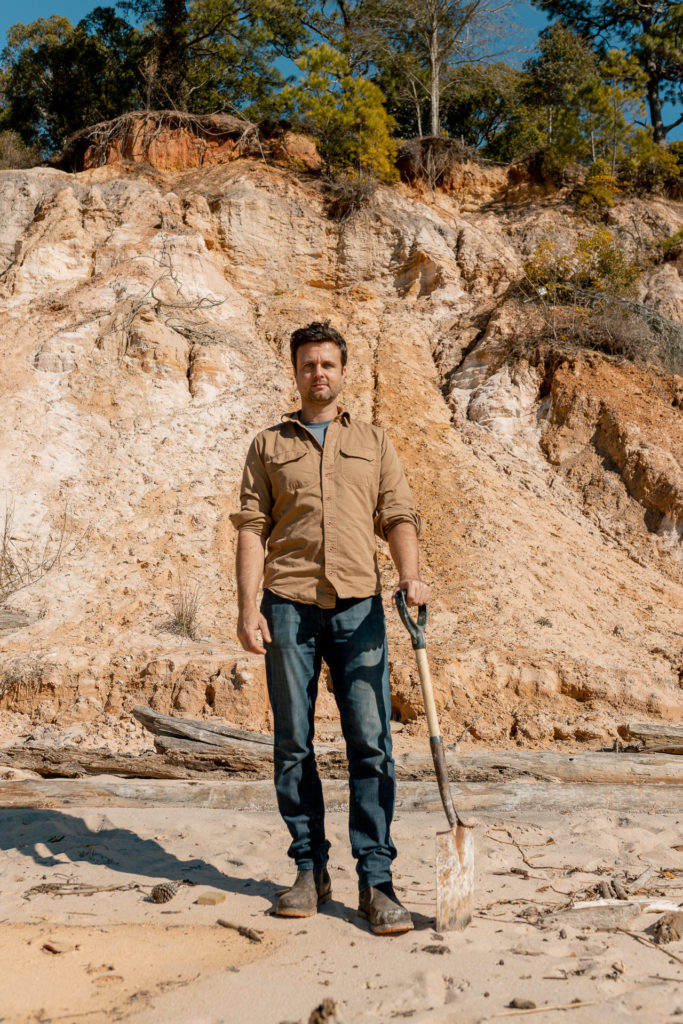
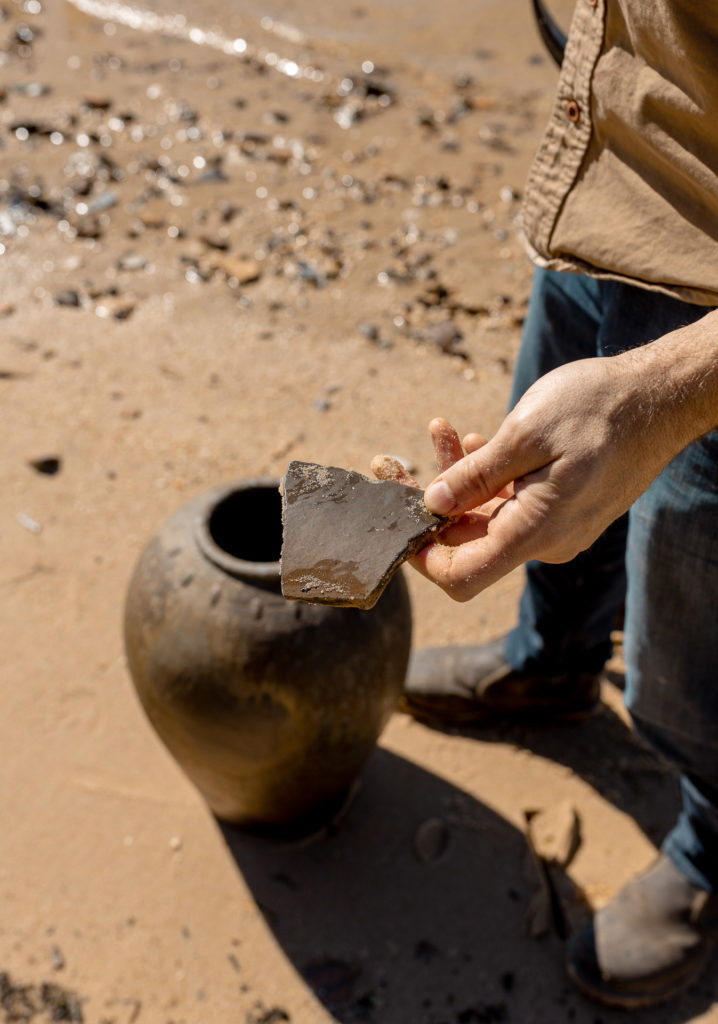
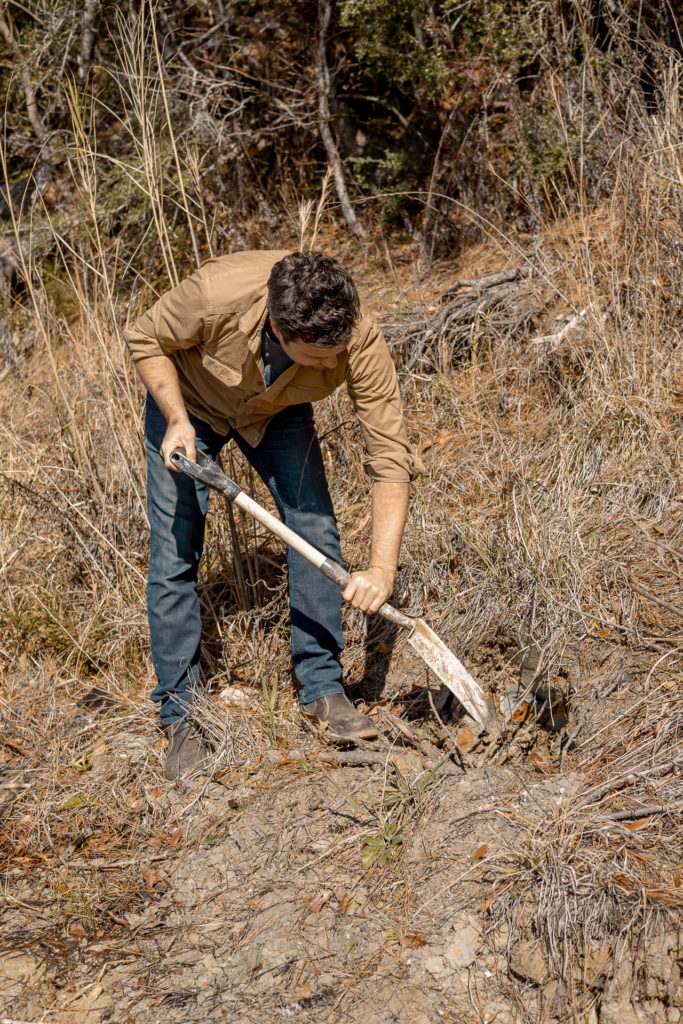
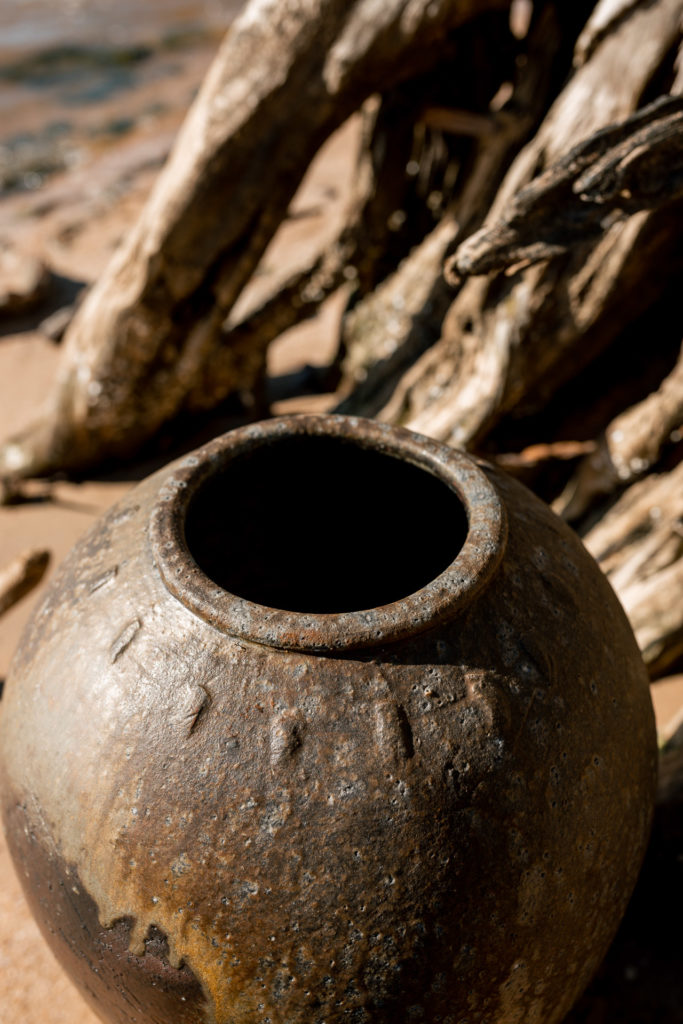
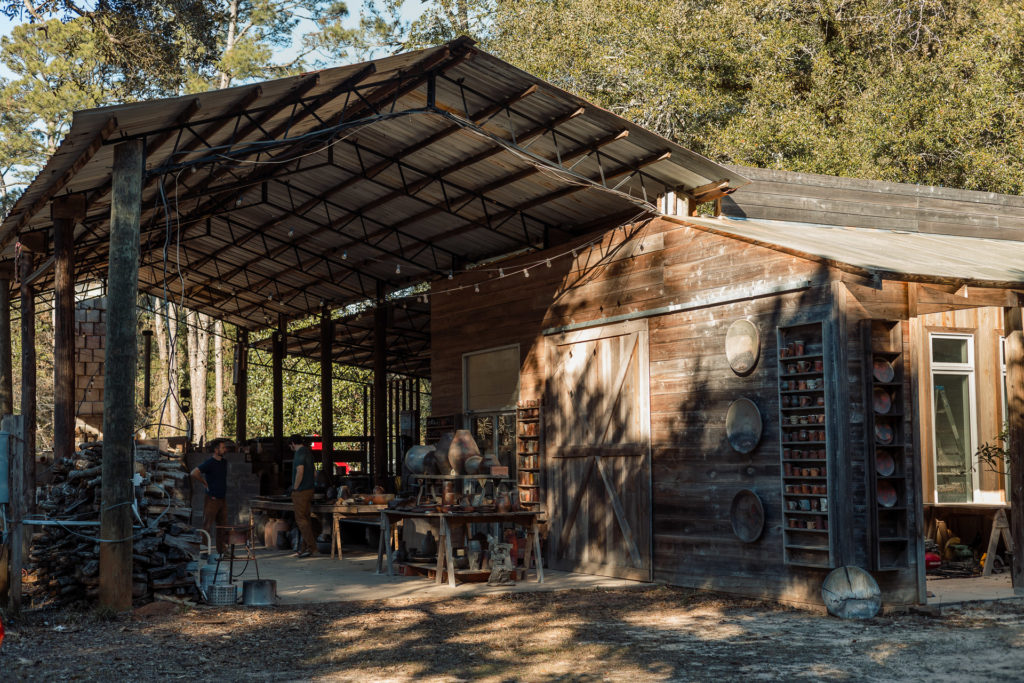


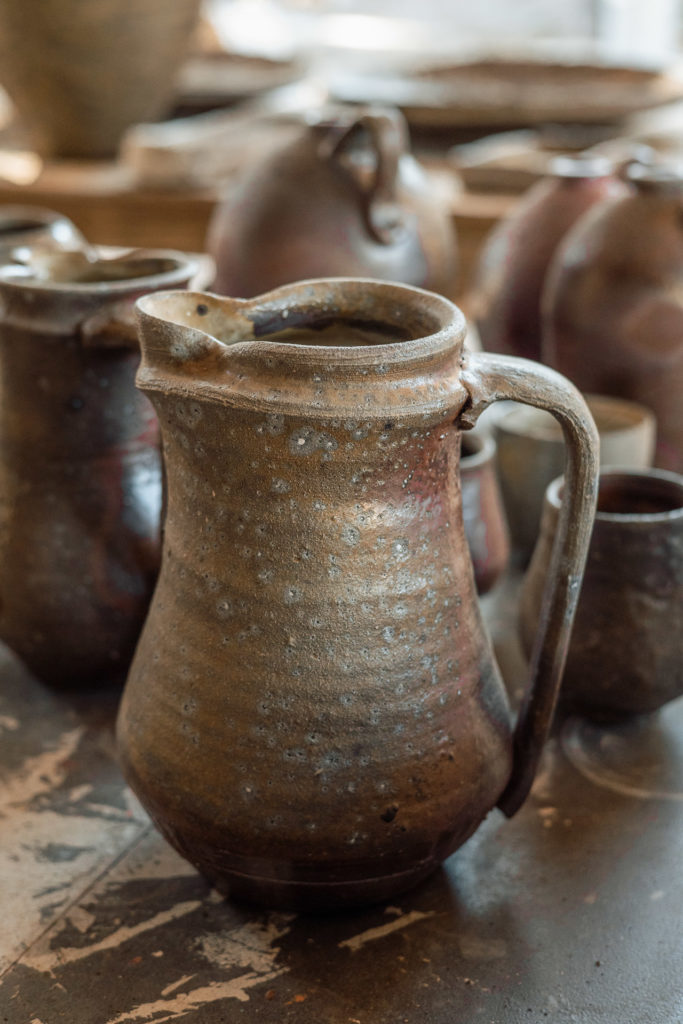
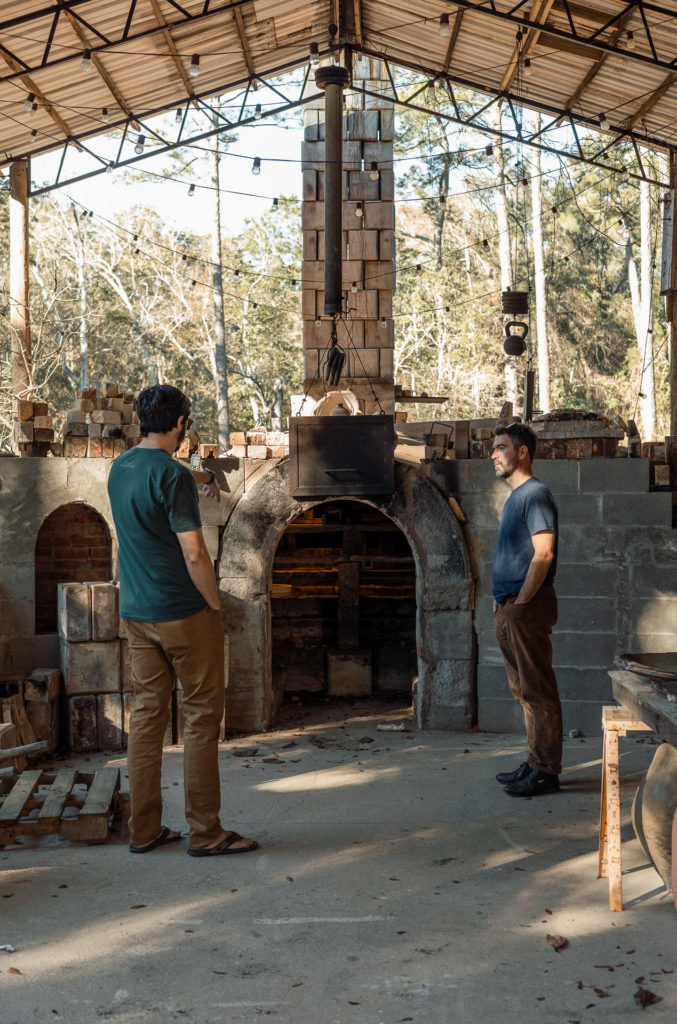
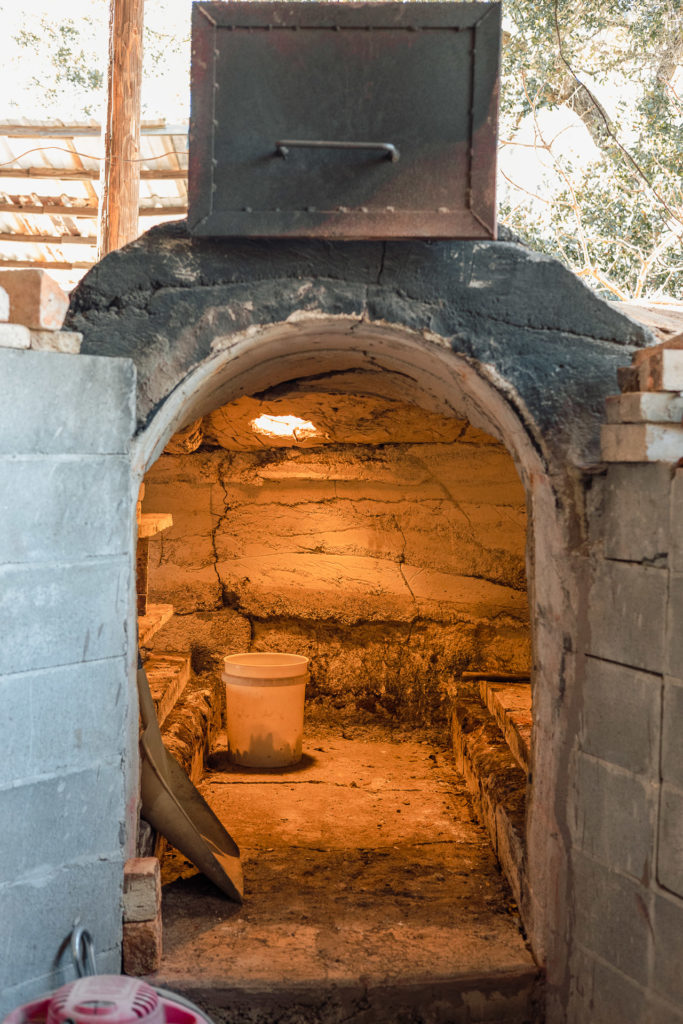
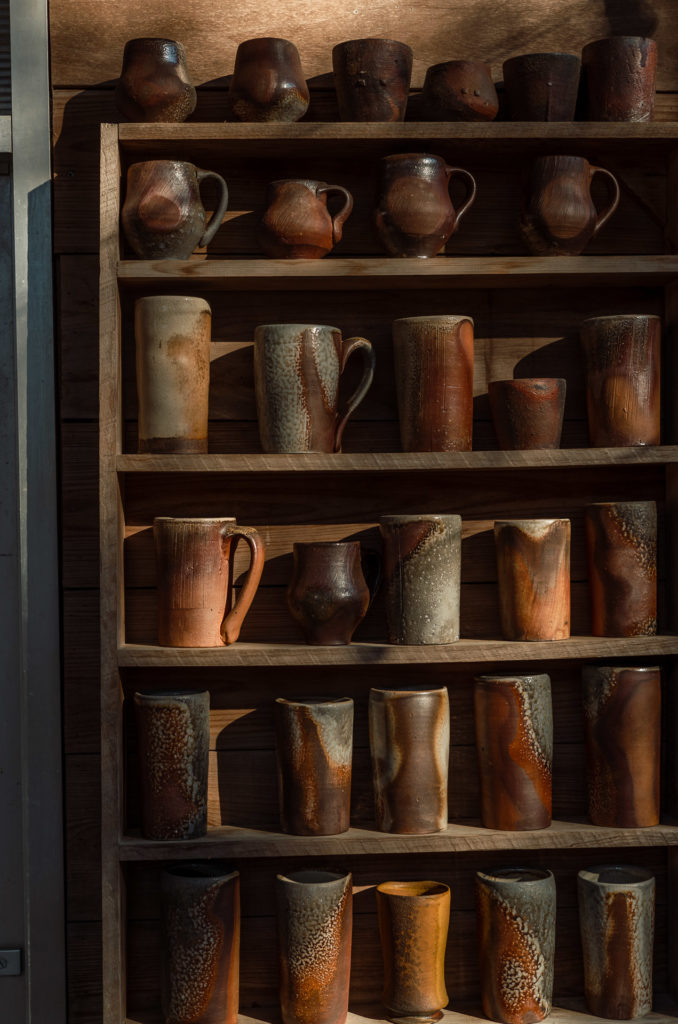

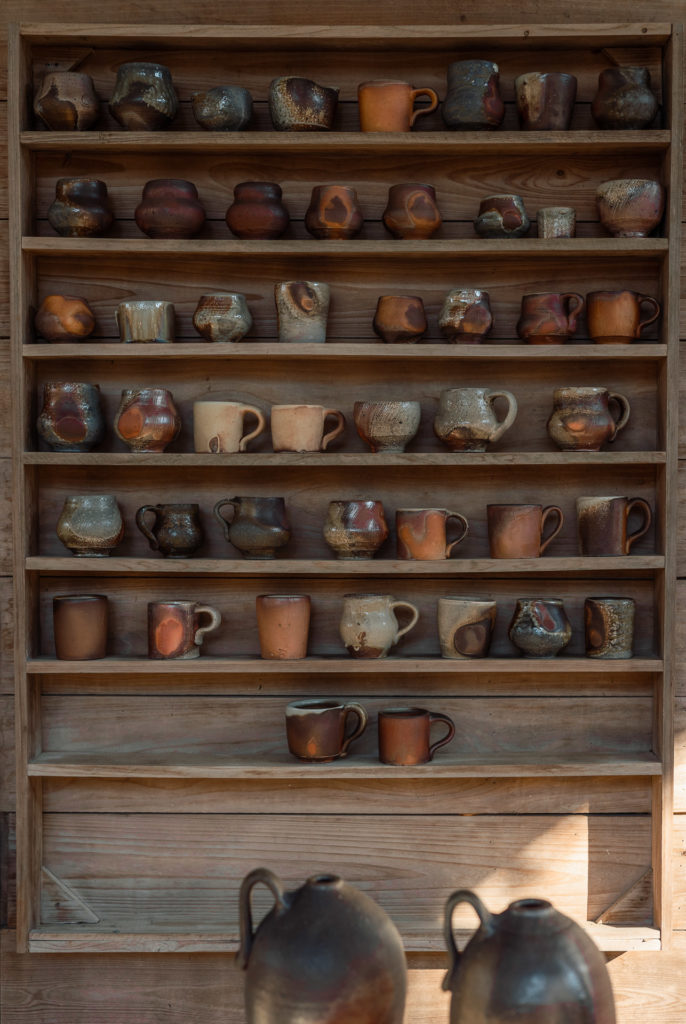
Tony Wright has been teaching ceramics at the University of South Alabama for more than 20 years. His own work has been displayed in more than 125 exhibitions, with 82 pieces selected for inclusion in 55 different juried exhibitions at local, national, and international levels. “Forming and discovering the form has always been my favorite part,” Wright says. “But as a professor I teach all aspects of ceramics. So, the things I’m teaching my students have always become a big part of my own work. The most consistent thing has been my passion for working on the potter’s wheel. I have a lot of very symmetrical forms. I think most people who look at my work would call me a ‘tight fussy potter’. The polar opposite of Zach Sierke, who I would say is a rough, loose and rugged potter. But we both find ways for what his kiln offers to be in service of what we want to do.”
Professor Wright has worked with Sierke on research projects at South Alabama testing local clays from both a potter’s and scientific perspective. He’s currently working toward collaboration with the engineering department, trying to find porous iron-bearing clays to pursue water filtration for third-world countries and large urban communities.
Professor Wright sees the local pottery community continuing to grow. “I get calls all the time from people interested in getting into pottery and, unfortunately, I cannot oblige them unless they enroll at the university,” he says. “But it’s great that we have more opportunities to pursue the art form more as a hobbyist these days. For instance, they offer classes at the Mobile Museum of Art, the Contemporary Art Center, and the Central Presbyterian Church downtown. Moonstruck pottery has quite a thriving opportunity for the community to try their hand. Also, of course, the Art Center and the Kiln on the Eastern shore. And I think there will always be an interest in what we do because it is so immediately gratifying and different than staring at a screen and clicking on things. It’s very visceral, very physical.”
Pottery uniquely marries history and art with function. Clay deposits from a prehistoric epoch can be fired into a form of distinct artistic expression that one relies on in their daily routine. “Potters in general talk about how important something like a coffee mug is as a work of art compared to other kinds of domestic objects,” says Sierke. “You don’t sit for 20 minutes every morning with a painting on the wall and hold it in your hand.”
Susie Bowman relayed a similar sentiment when asked why pottery was still relevant in the modern plastic world. “Pottery is made from the earth and by hand, just like our food. It evokes a connection to our lives that plastic just doesn’t convey. There is not only the connection to the earth but also to the maker that offers an intimacy which is often lacking in our fast-paced digitized world of today. It tells our history and our progress as humans. I believe pottery will always have a place in society. After all, it is art that differentiates humans from other creatures.”
